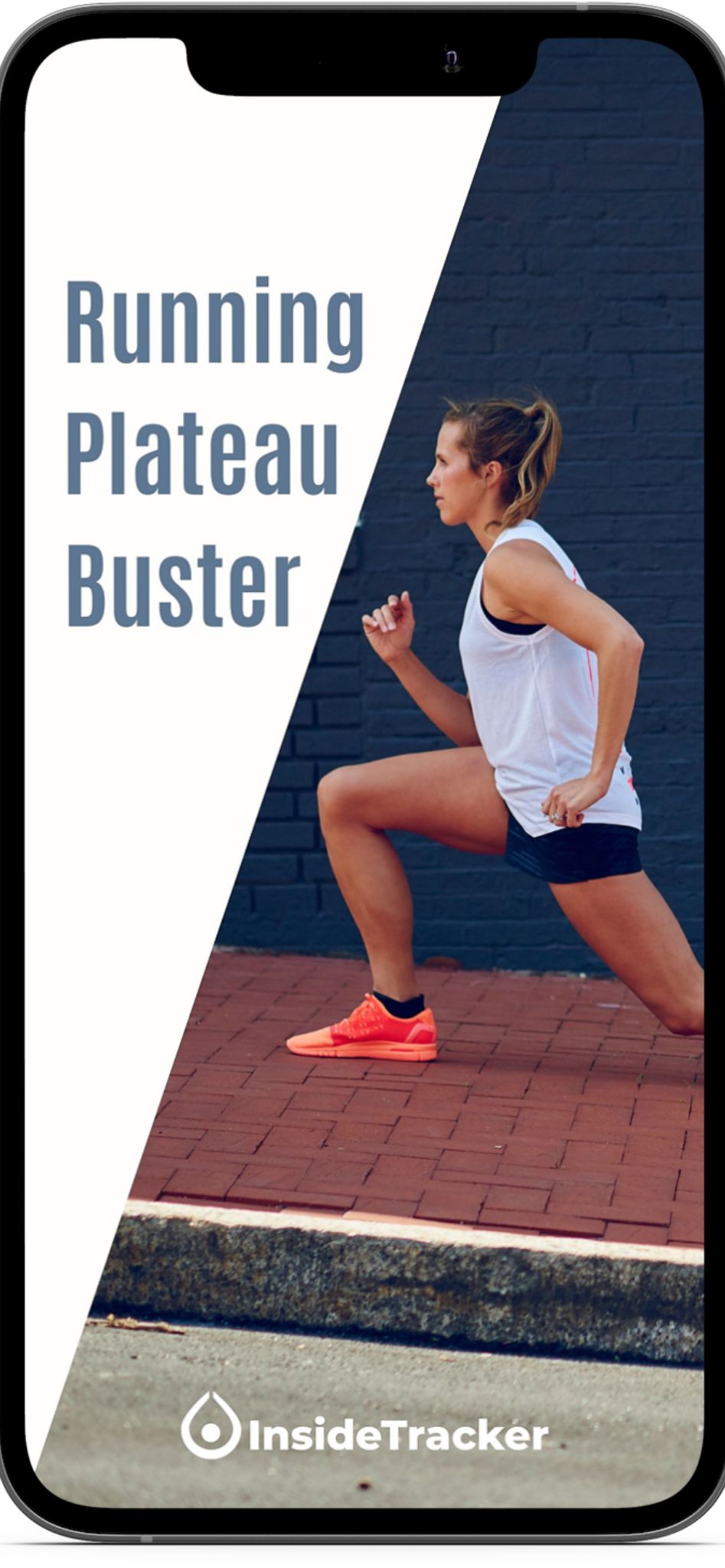Carbon plated shoes are everywhere now, not just in super fast race day shoes. But is it okay to run in carbon plated shoes every day? Are there benefits to your recovery or are you actually abusing your legs? We did the research to help you make the most of your choices.
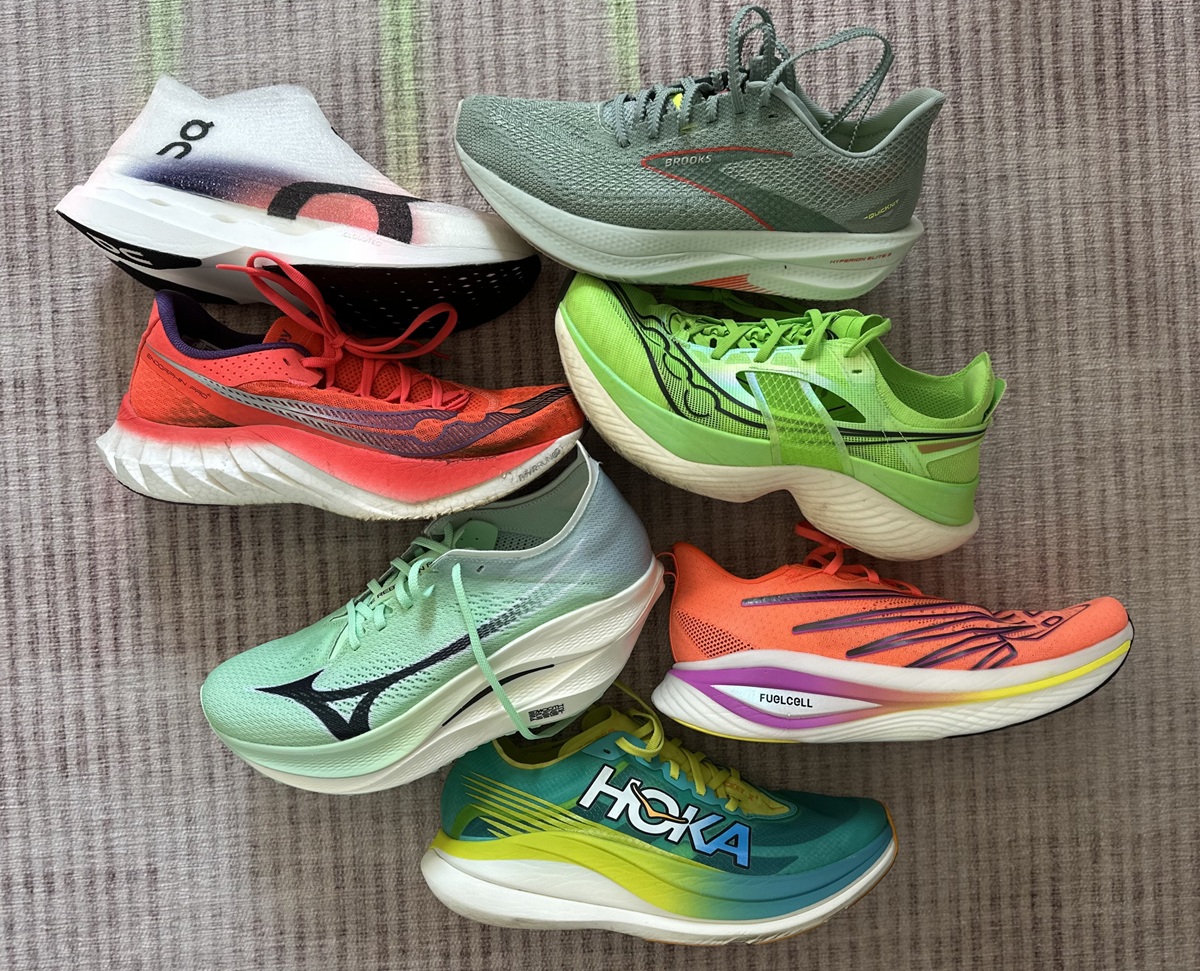 There’s no denying that carbon plated running shoes are some of the flashiest and fastest out there. They’re the ones we see on the feet of elites as they break records and chase after strong finishes.
There’s no denying that carbon plated running shoes are some of the flashiest and fastest out there. They’re the ones we see on the feet of elites as they break records and chase after strong finishes.
And of course now, we have a whole new slew of shoes called “super trainers” which have a plate and are in fact designed for more training than just top end speed.
Before swapping your running shoes for a carbon plated shoe, there are a few important things to consider about how these shoes work, how they affect your body, and what kind of workouts they’re built for.
We did our research and talked with Physical Therapists, doctors, and those logging lots of miles to help answer the big question- Is it okay to run in carbon plated shoes every day?
Why It’s the Carbon Plate + Cushion That Matter
Carbon plated running shoes or maybe you’ve heard them called “super shoes” aren’t popular just because of how the shoes are designed. They’re known for shattering records across all distances and resulting in personal bests for so many runners.
Carbon plates, in the context of running shoes, refer to thin layers of carbon fiber material strategically placed within the midsole. These full-length plates are typically sandwiched between layers of foam to provide cushioning and support while leveraging the unique properties of carbon fiber.
In fact, it’s the cushion + the plate that really give you the speed. Which is why we can see such variation in speed of shoes with plates.
One study found that women who wore PEBA foams combined with the springy carbon fiber plates inside the shoe finished marathons 2.6% faster.
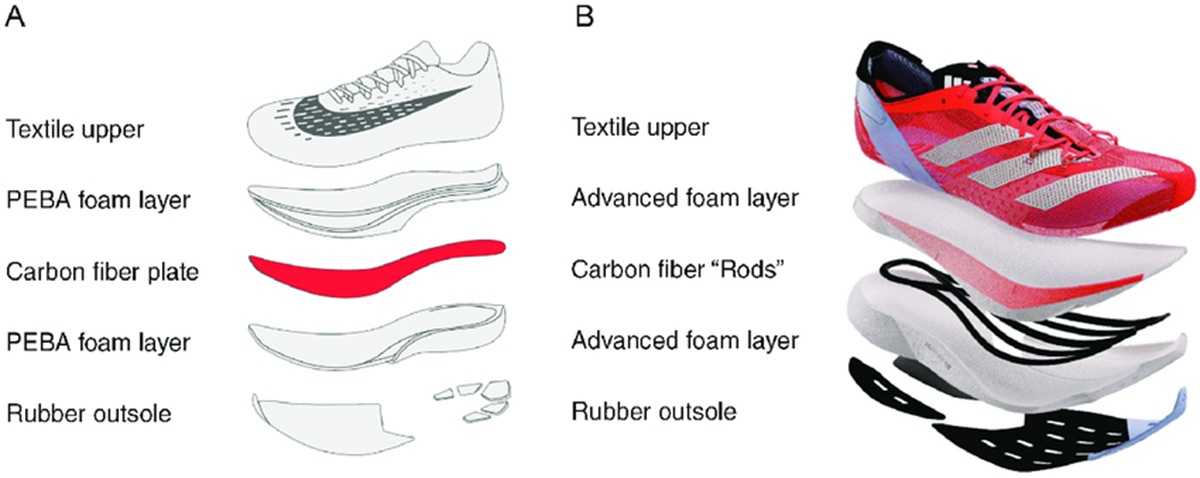
Carbon fiber is known for its exceptional stiffness-to-weight ratio, making it an ideal material for maximizing energy transfer and responsiveness in running shoes.
Bekah Broe, Sr. Product Director, Performance shared that “When engineering plated systems, we (Hoka) make strategic compound decisions to ensure we are providing the right balance of longevity and performance based on the end use terrain. In the case of the Mafate X, the bottom midsole foam is SCF EVA, which is our most durable ground contact SCF compound with the best longevity in our SCF library.”
Which is to say again that the cushion makes a massive difference in how a plated shoe is going to perform. The bouncier shoes tend to be what you see in a fast Hoka Cielo X1 2.0, while something a little softer makes sense in the Mafate X which needs to cover 100 miles of trails.
How Long Do Carbon Plated Shoes Last?
When it comes to carbon plated shoes, the answer depends largely on the materials, especially the type of foam used. To keep things lightweight and bouncy, most of these shoes are built with ultra-light PEBA-based foams, often referred to as “super shoe” foam. It’s part of what gives them that springy, race-day feel.
The lighter, bouncier foams tend to break down more quickly than the denser materials you’ll find in your typical pair of running shoes. Most carbon plated shoes should get retired around 200 miles or so, which is less than half of what you’d get from your everyday running shoes.
Meanwhile the super trainers or shoes with softer foam are considered more training shoes and should get closer to 300-400 miles.
If you’re planning to race in the top tier shoes, especially for a marathon or half marathon, it’s a good idea to limit how often you train in them. That way, they keep their pop for the days you want to go after big goals.
Carbon Plate Running Shoes Pros and Cons
Running in carbon plated shoes feels fast and fun, there’s that bouncy feeling you get with each step forward. I still remember when I experienced the springiness for the first time with Saucony Endorphin Elite and the Mizuno Wave Rebellion.
But runners, be warned, if you jump right into using supershoes without any break-in period, there may be some consequences.
All individuals respond to plated shoes differently and have different preferences depending on their goals, we suggest using a range of plated and un-plated footwear for a well-rounded quiver. –Jared Smith, Hoka Product Line Manager
These fast shoes shift the load to different muscles, especially around the ankles and Achilles. We’ve even seen some elites with Achilles injuries that they directly attribute to more miles in these plated shoes.
If you’re throwing these shoes on and immediately heading to a race, your muscles are likely going to be rather sore after. This doesn’t mean it’s bad to wear carbon plated shoes, it just means, like with anything new, you need to give your muscles time to adapt.
And make sure you’re packing an extra pair of shoes for pre and post race. Carbon plated shoes are not something you want to just walk around in! It’s both a waste of the shoe and unnecessary stress.
Downsides to Running Daily in Carbon Plates
We asked a few of the experts their thoughts on wearing carbon plated shoes everyday. Victoria Sekely, DPT works with a lot of runners as a PT and running coach. She said while it’s “ok” to run in carbon plated shoes every day, she wouldn’t recommend it for a few reasons:
1. Super shoes reduce the load on your foot and ankle muscle.
The carbon plate helps push you forward without as much work from your musculature – which is fantastic for performance, but not so great from a training perspective! Wearing them every day would mean you’re consistently under-loading your foot and ankle muscles, making them less resilient.
2. Variety is key when it comes to injury prevention!
Therefore, wearing one type of shoe all the time doesn’t allow for the benefits of rotating your shoes. It’s totally ok to wear your carbon plated shoes weekly – but not on every run. However, I would always make sure you test your super shoes out before race day at least a few times to make sure your body feels good with them!
Coach Amanda has shared many, many times studies showing up to a 39% reduction in injury risk by having a running shoe rotation.

Think of it like when you first started running, you gradually increased the mileage to avoid getting injured. You want to do the same with wearing carbon plated shoes. Start with shorter workouts before grabbing them for your harder long runs and even race day.
3. Mentally Used To The Feel
Wearing a pair of carbon plated shoes helps your goal race pace feel easier with that extra bounce and cushion. But you don’t want your body to get so used to always having this extra bit of “assistance”.
4. Lack of Benefit for the Price
Physical Therapist, Kate Bochnewetch, does not suggest that her athletes always grab for a pair of carbon plated running shoes.
“I would not recommend wearing carbon plate shoes every day, for a few reasons. There’s really no benefit for easier effort runs, which should be the majority of your runs, and they aren’t as lasting as other shoes- with that price tag you’ll want to save them for when it makes sense!
Carbon plate shoes can be used for various kinds of speed work as part of a shoe rotation and of course for racing, but otherwise any other training shoe you’re comfortable in will do!”
Benefits to Running in Carbon Plated Shoes
All right we know that they’re great for speed and we talked about other benefits in our round up of the best carbon plated running shoes.
But is there any time when wearing carbon plated shoes daily is worth it? This is actually where we tend to see things like nylon and even PEBAX plates come in to the picture.
While we absolutely still recommend a rotation of shoes to recruit different muscles, you could run in many of these daily (i.e. the Puma Deviate Nitro Elite 3 or the Saucony Endorphin Trainer).
1. Reduced Soreness
Super trainers have a claims that they reduce muscle soreness. And we’re all game for that, so this is one reason the trainer versions are popping up alongside the super shoes for racing.
2. They’re fun
Honestly this is the only way we could get to 2 items on this list. And it’s not because of the plate, it’s also because of that super foam we mentioned.
The combo is more unstable, you’re less able to fully articulate the foot (around your toes) and as you’ll read next we see a lot of potential problems.
3. Potential To Help with Plantar Fasciitis
BUTTTT if you go with a firmer option then it could provide more stability to the foot and potentially be useful to some runners with ongoing lower leg injuries, particularly plantar fasciitis.
The Foot and Ankle Institute of Maryland explained that because the carbon plate is typically the full length of the shoe, it helps with evenly distributing the pressure across the foot, taking the strain off the plantar fascia.
This is still a person by person case, we’ve seen it help some athletes but make things worse for others. And again we know overly soft shoes are not great for PF, so this is a test it out and see kind of thing.
Do Carbon Plated Shoes Increase Injuries?
The research is still limited on the impact of running in carbon plated shoes, but what is out there is data to understand how the body moves differently in these super shoes. (And a lot of PT’s with anecdotal evidence.)
One research study looked at how carbon plated running shoes change your biomechanics. Instead of your feet and ankle muscles doing all of the work, the combo of the carbon plate and PEBA foam in the shoe takes on more of the effort, storing energy as you land and returning it as you push back off.
This is why you hear runners describe running in carbon plated shoes as having a springy or pop feel.
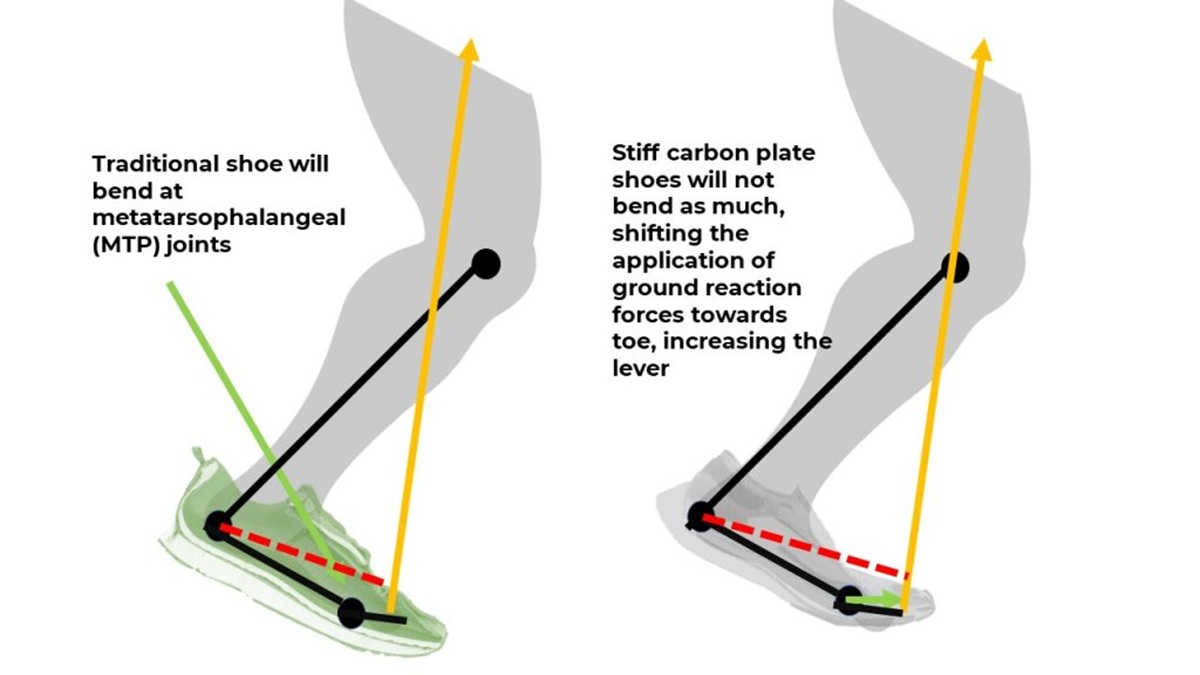
After following 5 different runners, researchers suggested that there may be a risk of bone stress injuries, especially in the midfoot, if you’re not taking the time to get used to the shoes. Like we mentioned earlier, jumping into carbon plated shoes without easing into them increases injury risk.
The same study also raised concerns about what happens if you always run in carbon-plated shoes. Because they’re reducing how much your lower leg muscles have to work, there’s a chance these muscles like your Achilles, can weaken over time from underuse.
Dr. Asher Henry, a DPT and running coach, shared that “because the technology is so young, we do not have substantial enough evidence to say what specific injuries might be more likely (or the opposite, for that matter!).
Although some grey remains, one thing is certain: as with any shoe, if a runner does not take the proper time to allow their body to slowly and gently adapt to a new shoe, particularly one with such a unique design compared to a traditional shoe, injury risk and rate will increase. I provide my athletes with a 4-6 week transition period which takes place well before their goal race.”
We still don’t have a clear answer on whether carbon-plated running shoes help prevent injuries or cause them. Most of the research so far has focused on elite athletes, which doesn’t always translate to those of us hanging out in the middle or back of the pack.
Does the Type of Carbon Plate Make a Difference?
Just as there are different types of foam that make up the cushioning of a shoe, there are different types of carbon plates.
Super shoes are categorized by the carbon plate’s length and material. You will find shoes with either full or partial length carbon plates.
Typically, shoes that you will wear on race day like the Nike Alphafly 3 will have the full length. Whereas others will have partial length with a plate just in the forefoot or midfoot. The difference here basically comes down is how much pop and stability the shoe will have.
Curved Plates Reduce Injury
This research study compared flat versus curved carbon plate shoes and how they affect your running form, especially when you start getting tired. Turns out the curved plates made a big difference especially with injury prevention.
When runners wore shoes with curved carbon plates, their knees and hips didn’t have to bend as much. Less bending means less work, which could help you hold better form late in a run, when we all tend to fall apart a little and our form may get a little sloppy.
Split Plates Benefit Trail Shoes
What about split-pronged plates like what you’ll find in the Mafate X?
The Hoka team shared that split plate constructions allow for additional proprioception and articulation in dynamic environments, making them ideal for trail surfaces. Based on learnings from the dual parallel carbon fiber plate constructions in shoes like the Tecton X 3, we also learned that bridging those plated elements can help provide additional stability and suspension without compromising on trail ground feel/adaptability.
If you’re running speed workouts or looking to stay strong through the final stretch of a race, this could matter. Curved carbon plates might help reduce wear and tear on your joints and delay fatigue, which means better performance and a lower risk of injury.
When Should You Wear Carbon Plated Shoes?
You want your body to get used to wearing carbon plated running shoes, especially if you’ve never run in anything like this before!
Since they are going to break down quickly (and they aren’t cheap!), you want to avoid wearing them all of the time and save them for specific workouts. These workouts should be similar to race day efforts:
- Interval workouts
- Threshold Runs
- Long Runs with marathon pace sprinkled throughout
Wear a different pair of shoes for your warm up and cool downs when you’re hitting those easy and recovery paces, where you won’t need the extra push forward.
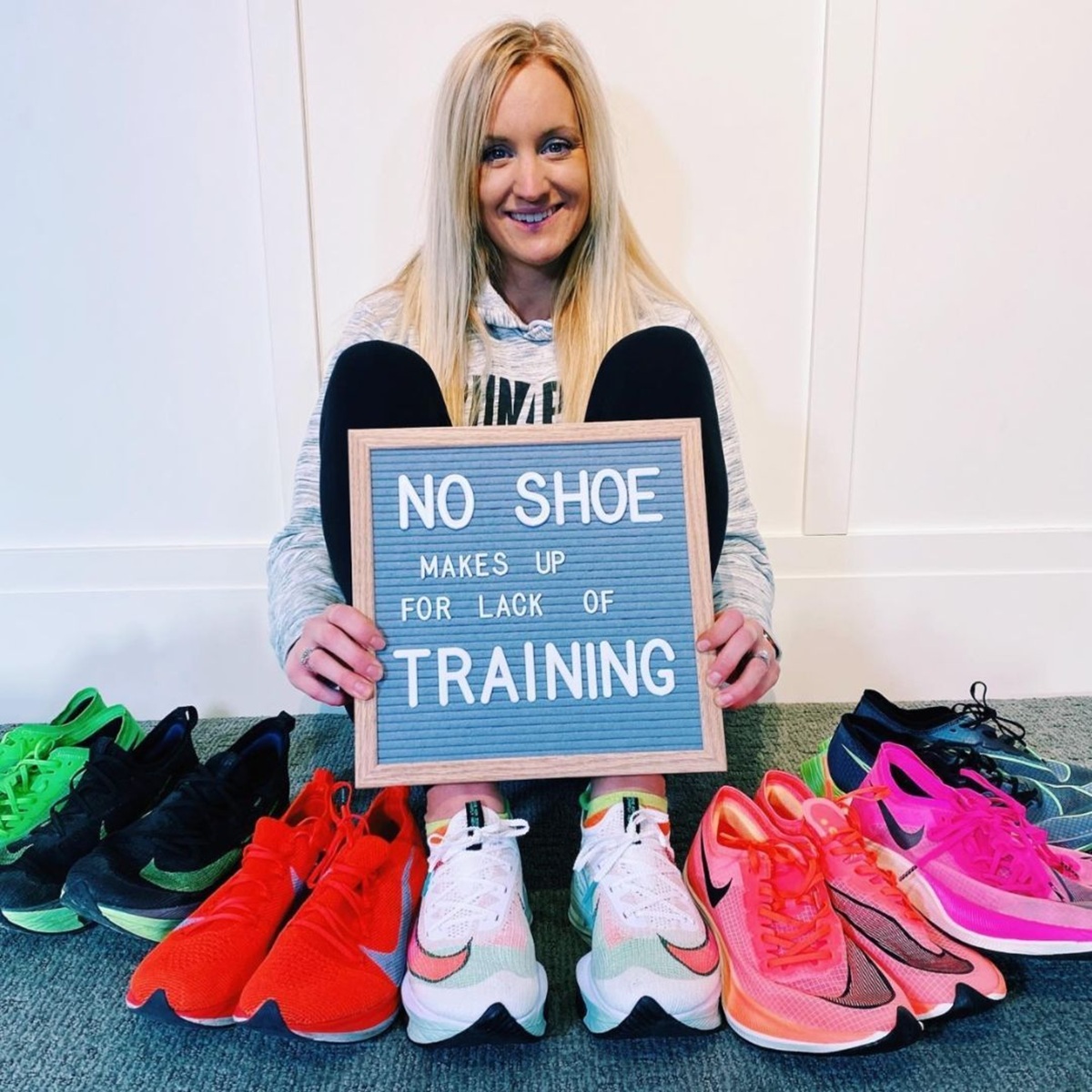
Spend Time Strength Training
Because carbon-plated shoes reduce how much your lower leg muscles have to work, it’s important to build strength in those areas. Which all runners should already be doing, but we know that most of us are not!
Over time, relying too much on that built-in support could lead to weakness in your ankles, calves, and feet. Mixing in non-plated running shoes a few times a week can help keep those muscles engaged.
But remember, it’s what you’re doing outside of running that can help make a difference. Strength training should be on every runner’s to-do list.
- Add a few runner strength exercises that focus on lower body
- And grab a mini band for some ankle strengthening exercises for runners
- Check out some simple hip strengthening exercises for runners
It doesn’t have to be super long sessions, even 10-20 minutes twice a week can help to make a difference!
Carbon Plated Running Shoes Vs Super Trainers
What’s the difference between carbon plated running shoes and super trainers? Let’s take a quick look.
Carbon plated running shoes are your go-to for race day and chasing after PRs. The carbon plate, combined with lightweight PEBA foam, gives you a springy, fast feel underfoot, but they’re not exactly built for comfort, stability, or lasting hundreds of miles. Kind of like a one hit wonder, you could say!
Super trainers, on the other hand, are designed to handle it all. They’ve got more cushion, a bit more flex, and enough support to carry you through long runs, tempo runs, and those big training weeks. Plus, they’re built to last so you’ll get a lot more mileage for your money.
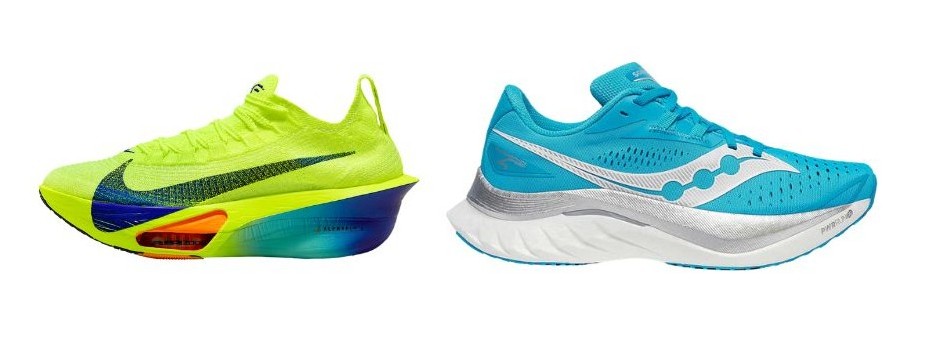
The Nike Alphafly and the Saucony Endorphin Speed are great examples of carbon plate vs. super trainer.
- Nike Alphafly has a carbon plate; Saucony Endorphin Speed has a nylon plate
- Nike Alphafly uses ZoomX Foam and Zoom Air units
- Saucony Endorphin Speed uses PWRRUN PB Foam
- Saucony Endorphin Speed is great for tempo run, long runs and daily miles
- Nike Alphafly is ideal for race day efforts and faster paces
- Alphafly stack height is 40mm, Endorphin Speed is 36mm
- Saucony Endorphin Speed costs $170 ; Nike Vaporfly costs $285
A lot of the brands that have carbon plated shoes out there have a super trainer as well!
If you’re thinking about giving carbon plated running shoes a try, we hope that this helped answer some of your questions!
Instead of logging all of your miles in them, save these shoes for key workouts and race day. Just make sure to get in a few runs at your goal pace so your body can adjust before you hit the start line!
Looking for more training tips?
- Are Max Cushioned Shoes Bad For Us?
- Strength Training for Aesthetics Vs Performance
- 10 Best Shoes for Heavier Runners



 Mizuno Wave Rider 28 Review | Traditional Trainer that Lives On
Mizuno Wave Rider 28 Review | Traditional Trainer that Lives On
